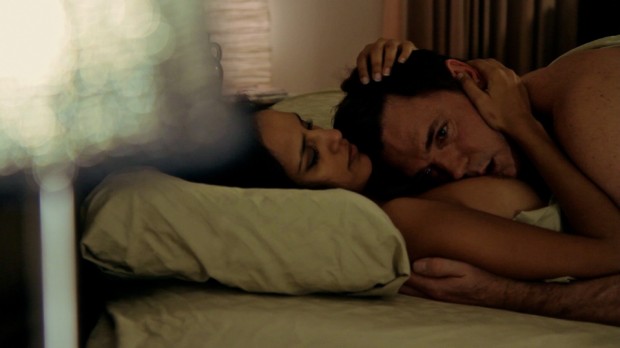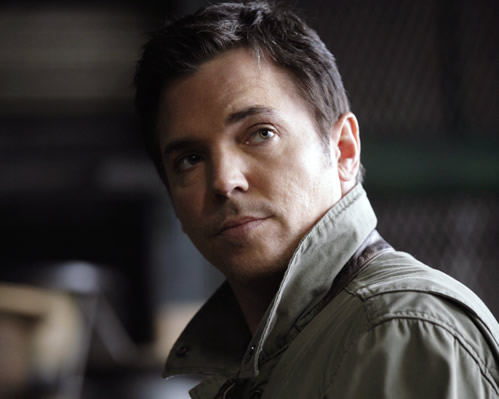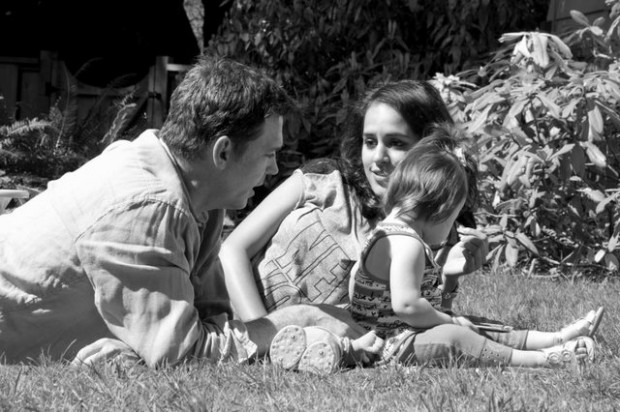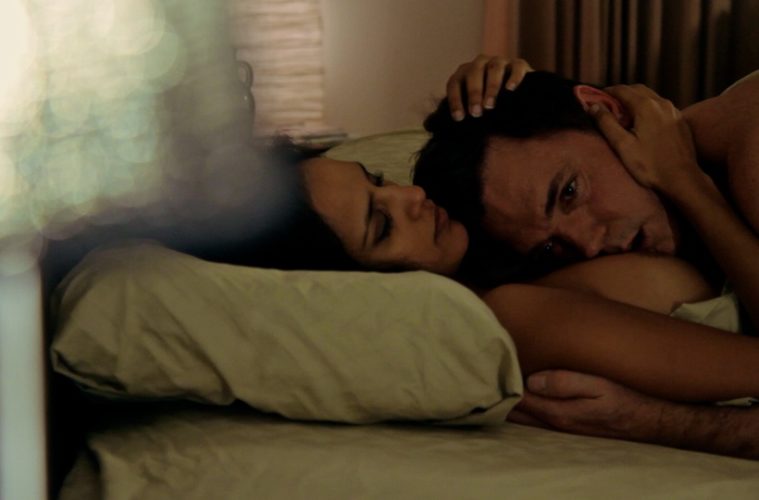
Amidst gala premieres of Wachowski-shepherded epics, bits of Oscar bait, and lavish literary adaptations, the Toronto International Film Festival also features a wildly diverse cross-section of smaller films, many showcasing Canadian filmmakers. One such director is Bruce Sweeney, whose 2001 film Last Wedding was a TIFF opening might selection. He’s back this year with The Crimes of Mike Recket, a dark study of an everyday sociopath, and a drama that brings a shocking murder to a mundane suburban setting.
Several days after the film’s festival premiere, Sweeney spoke to The Film Stage about his film, his cast, and the TIFF experience.
The Film Stage: Bruce, tell me a bit about the cast. They all seem very natural—even “normal”—and really fit this milieu.
Bruce Sweeney: The cast, I love this cast. I’m an actor’s director, so everything was warm and personal. This is a low budget film, shot over two years on weekends. I just rang up Nicholas Lea [who plays the titular character], Gabrielle Rose, Paul Skrudand, Agam Darshi, Raphael Kepinski, and the rest, sent them some pages, and we took it from there.
I’m especially intrigued with the key casting of the movie—Mike Recket. What made Nicholas Lea the perfect fit?
BS: I felt Nick Lea, who delivers a great performance, was perfect for the role—i.e., he had the look I wanted. He’s handsome, but he’s middle aged, and one gets this sense that he’s relied on his looks and charm for everything, and now he has to confront something very unsettling, which plays into the theme of the film … some mistakes you can’t get past.

Despite what he’s accused of, watching the film, it was hard not to feel sympathetic toward Mike at times … and then hate him a couple minutes later. Was that a goal, this feeling of daring the audience to “like” Mike?
BS: I definitely feel that Mike’s character is sympathetic. I hope one gets the sense that Mike’s from a normal middle class family. It’s as if the screw-up brother—not a career criminal—is under police investigation, and family members are surprised but not that surprised.
In terms of “daring” the audience to like Mike, I think that comment is right on the mark, because I wanted to play with genre character identification issues—one is not given signposts that clearly point the way, in terms of how we size up a character, story, etc. These cops are not film noir cops. They don’t need to avenge their partner’s death, and one gets the sense that this investigation is one of many.
At times, the story felt “ripped from the headlines,” as if this is something we could read in the paper at any time. Where exactly did the idea for the screenplay come from? Was there a specific story that served as the basis?
BS: Yes, the story feels ripped from the headlines because the “land title fraud story” was taken from the headlines—not one exact story, but I researched countless land title fraud stories. And I wove an emotional one-sided love story into that basic set-up and, of course, an unplanned murder story.
Mike’s crime comes as a result of financial struggles, which of course ties it in with much of what’s happening in the world. Do you see the film as commenting on this global issue?
BS: The economic crisis is a massive topic, and I wanted to be specific as possible [with] the idea of a small story within that larger story. And I wanted to get the sense our man Mike always skated past problems, yet this is one time he couldn’t skate past. This plays into the notion that taking a life is so powerful that even a man with weak morals can’t get past it.

There is dark comedy here, some from the police officers, some from Mike himself, and his reactions and responses. Yet there is also sudden and disturbing violence. Does this reflect the duality in our main character?
BS: I always try to add dark comedy wherever I can to make the viewing experience more enjoyable. I hope it doesn’t feel too “added in,” and yes, I do feel it adds to Mike duality. But in terms of sudden violence that disrupts the established tone, I got that from watching Altman movies. The tone gets shattered—a tone is established and then completely disrupted. As a viewer, that’s powerful.
Without giving anything anyway, the film ends before giving us Mike’s ultimate fate. We have a clear sense of what’s to come, but I’m curious for your thoughts on the film stopping when it does.
BS: In terms of the ending, I wanted to end on a sense of impending doom for our antihero. To me that felt stronger than a precise rendering. Also, we shot this film for $20,000, and $20,000 for post-production, so on a shoestring budget your options are limited.
I noticed a lot of hand-held camera, which seemed fitting for this type of film. Was that an aesthetic choice?
BS: Hand-held—but not overly conscious—camera was very much the template. I felt it added a voyeuristic feel and of course played into our micro budget. Dragging a dolly around requires people, and we had a crew of three or four, basically.
Did you model this after any other films in terms of style? At times I thought of TV police procedurals, but in a much more “everyday” setting.
BS: I wanted to create an everyday feel. I didn’t want rainy streets, shadowy people, darkness, etc. I wanted manicured lawns, blue sky, sand, ocean. Again, this is about subverting the genre.
The films that I felt influenced me were Imamura’s Act of Vengeance, Melville’s Le Samourai and Le Cercle Rouge, Altman’s The Long Goodbye, and Narrow Margin, the ’52 version. And, of course, every film with a detective. I’m a film junkie.
Lastly, you’re a TIFF vet. What’s the experience like for a Canadian filmmaker, and has it been a springboard for you?
BS: I love TIFF—I feel the support! I have nothing but good things to say. It’s very, very valuable to an indie director.


